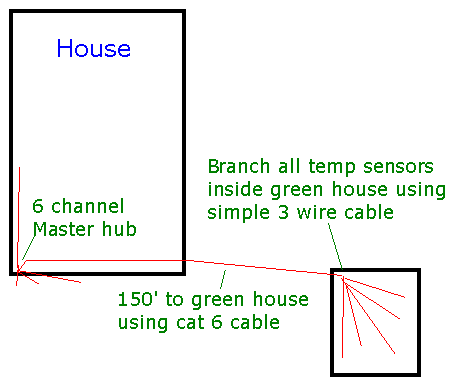I have a couple future applications where I am going to be monitoring some water and soil temps in a green house.
Anyone ever take one of the simple HB temp sensor kits and put the DS1820 at the end of a wire instead of mounting it on the board?
I am thinking that instead of trying to water proof the board and the lan cable, just water proof the sensor on the end of a 3 wire cable and then the sensor can be submerged in the water.
The board can sit next to the water tank.
Any reason the Ds1820 can't be located off the board, say 12 inches or so?
Thanks for any info
Doug
Anyone ever take one of the simple HB temp sensor kits and put the DS1820 at the end of a wire instead of mounting it on the board?
I am thinking that instead of trying to water proof the board and the lan cable, just water proof the sensor on the end of a 3 wire cable and then the sensor can be submerged in the water.
The board can sit next to the water tank.
Any reason the Ds1820 can't be located off the board, say 12 inches or so?
Thanks for any info
Doug

